28 Oct
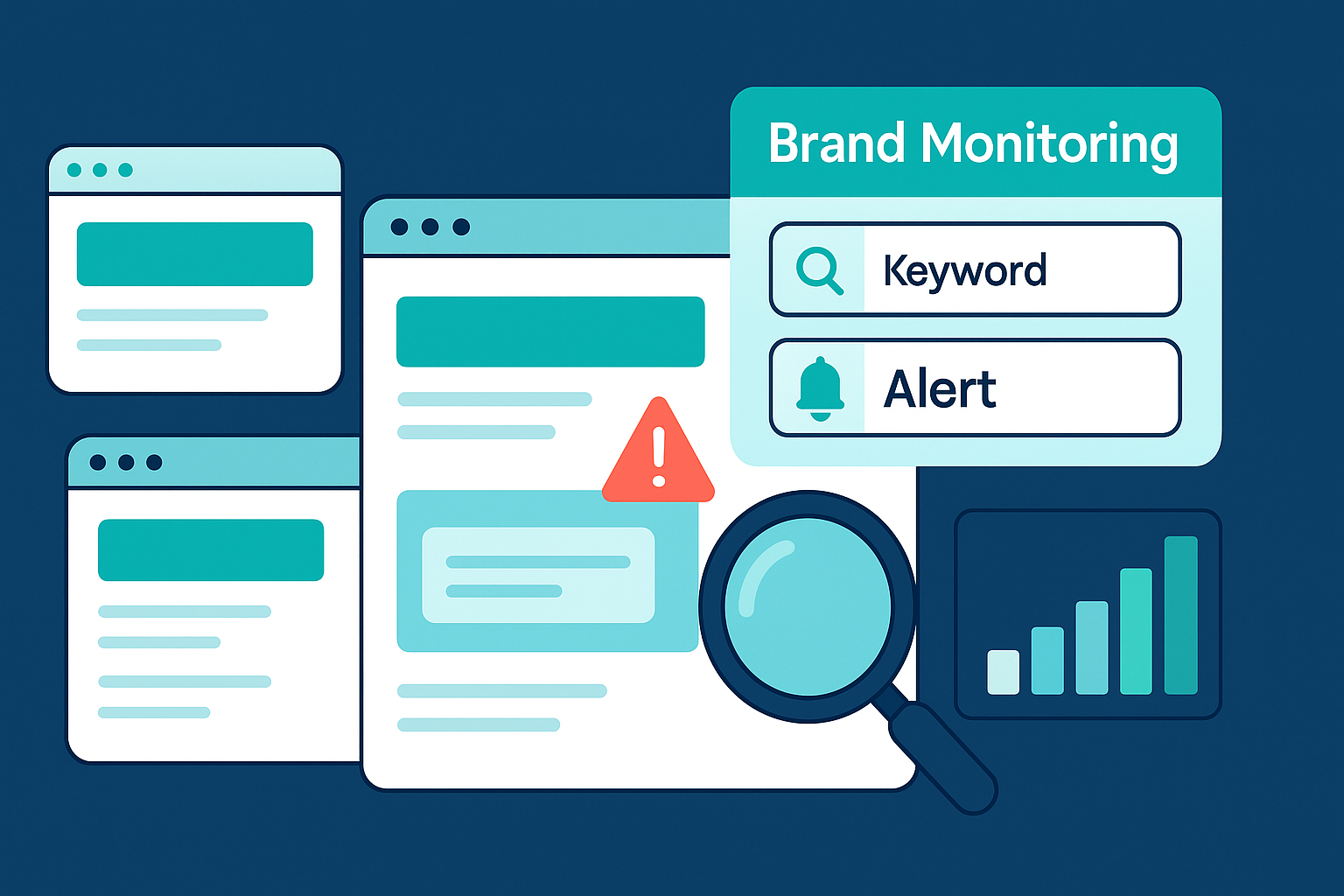
Recently, crowdfunding giant GoFundMe made headlines after (among other things) automatically generating some 1.4 million donation pages for U.S. 501(c)(3) nonprofit organisations. These pages were created without prior consent, using publicly available IRS data and partner-feeds.
According to reports, many nonprofits discovered these pages only when alerted by a donor or curious patron; they had no advance knowledge and had to manually un-publish or “claim” the page. The implications are wide-ranging: brand reputation, donor trust, search-engine visibility, fee transparency and user confusion all come into play.
For your brand (whether a nonprofit, commercial entity or campaign), this incident offers a powerful example of how, in an environment of large-scale automation and AI-driven content generation (think automated landing pages, programmatic sub-domains, AI generated copy), you stand to lose control of how your brand appears online — unless you monitor it proactively.
While you can’t control every single thing a software or media partner creates, both brand monitoring software and workflows exist to establish a proactive brand monitoring regime at your organization. If you are looking to implement this type of safeguard at your brand, it’s important to know:
How to establish a proactive brand-monitoring system (what to monitor, what tools to use, how to build the process)
What to look for when evaluating brand-monitoring software (key features, questions to ask, why they matter)
Let’s dive into both areas to get you started.
How to Establish a Proactive Brand Monitoring System
Areas to Monitor for Your Brand
When building a monitoring system, think broadly. Here are the key areas:
Search engine appearance & landing pages – Monitor for your brand name, official campaign names, “brand name + donate”, “brand name + fundraise”, or any variant where your brand might appear on a landing page you did not author. In the GoFundMe case, many pages surfaced and competed for search ranking.
Third-party platforms & marketplaces – Think of donation or fundraising platforms, listing sites, partner pages, affiliate pages. If your brand is referenced there (with or without your approval), that may expose you to reputational or trust risk.
Social media & user-generated content – Monitor for posts, hashtags or mentions of your brand (e.g., “Donate to [Brand]”, “Support [Brand] campaign”, “Fundraising for [Brand]”) especially where the post may create unintended associations or confusion.
SEO & backlink profile – New pages using your brand may dilute your site’s authority, siphon traffic, or confuse donors/customers. In the GoFundMe example, the sprawl of pages created a “huge SEO mess” for some nonprofits.
Brand mentions in AI‐generated content or programmatic campaigns – With automation, sub-domains or pages may spin up referencing your brand en masse. You need to surface when your brand appears in unexpected automated pages (bots, affiliate landing pages, etc.).
Reputation & trust signals – Even if the page is not branded identically, if it uses your mission or name in a way that donors/customers may assume affiliation, that is a risk. The GoFundMe case raised trust questions (nonprofits unaware their “page” existed).
Compliance/legal exposure – If your brand appears in fundraising efforts you did not approve (or your brand is used by others in donation solicitations), you have to monitor for potential impersonation, unauthorized usage, regulatory risk.
Ideal Tools for Brand Monitoring
A robust monitoring system uses a combination of specialised tools alongside human governance.
ChangeTower – A tool for monitoring webpages for changes, tracking new domains/sub-domains, keyword/brand mention alerts, and configurable notifications when unexpected usage appears.
Search-engine alerting tools – For example, setting up Google Alerts for “brand name + donate”, “brand name + fundraise”, “brand name + campaign”, to capture early mentions.
Backlink / SEO monitoring platforms – Tools like Ahrefs or SEMrush help you spot when new domains or pages link to your brand or campaign, or when your brand is referenced in unintended contexts.
Social-media monitoring platforms – Tools such as Brandwatch, Sprout Social, Hootsuite to track brand mentions, hashtags, user-generated content referencing your brand or campaign.
Programmatic content / domain-monitoring tools – Emerging solutions that scan for new domain registrations matching your brand, large-scale landing-page generation, or automated sub-domains (which may be used for affiliate pages or misuse).
Custom domain / brand-search tools – Some services specialise in detecting newly registered domains or sub-domains containing your brand name, misspellings, or variants.
Dashboards & alerting systems – Make sure your monitoring feeds into actionable dashboards, real-time alerts (via email, Slack, webhook), and integrates with your incident response/workflow.
Governance process & human oversight – Tools alert you; humans evaluate risk and decide action. In the GoFundMe case many nonprofits only learned of the pages by chance.
Steps to Build the System
Define your brand-sensitive keywords – Include your exact brand name, campaign names, official donation URLs, relevant abbreviations, common misspellings, “brand name + donate/fundraise”, negative terms like “brand name + scam”, etc.
Set up continuous monitoring using the tools above across the web, social media, domains, SEO/backlinks, and brand-mentions in automated/affiliate contexts.
Prioritise alerts – Classify what constitutes “high risk” vs “medium/low risk” (e.g., unauthorized donation page using your brand is high risk; an isolated social mention may be medium).
Create triage & escalation procedures – Who reviews alerts? What criteria trigger action? Example: if an unauthorised page uses your brand + “donate”, legal and communications teams are notified immediately.
Action plan – Upon detection you might: claim/verify the page, send a take-down request, redirect traffic to your official domain, contact search engines with canonical/redirect guidance, issue public communication if needed.
Review & iterate – Regularly audit how your brand appears online (e.g., quarterly). Check for unexpected new domains/sub-domains, search engine results for your brand+donate, unexpected link clusters, spikes in mentions.
Governance & roles – Assign brand monitoring ownership (brand manager, digital marketing, risk team). Define escalation paths, link monitoring to legal/comms/cyber teams for incident handling.
By putting these pieces in place, you move from reactive to proactive — positioning your brand to spot misuse before it becomes a reputational or SEO problem.
What to Look for When Evaluating Brand Monitoring Tools
When you evaluate monitoring tools (including ChangeTower and alternatives), you want to ask hard questions. Here are the core features, what to ask, and why they matter, especially in the context of programmatic AI-driven content generation.
Core Features & Capabilities
Coverage breadth
Question: “What sources does your tool monitor — webpages, new domains/sub-domains, social media, forums, dark web? What portion of the open web do you cover? Can you detect newly-registered domains containing our brand?”
Why: Automated/AI systems can spin up domains or landing pages at scale. If your monitoring only tracks known domains, you may miss emergent misuse.
Real-time or near-real-time alerts
Question: “What is the average alert latency (time from page appearance to notification)? Do you support email, Slack, webhook alerts? Can we customise alert thresholds?”
Why: In the GoFundMe case, quick detection could have enabled nonprofits to act before traffic or confusion built up. The faster the alert, the smaller the window of exposure.
Custom keyword/trend monitoring
Question: “How many keywords/phrases can we track? Can we include negative-context keywords (e.g., brand name + scam + donate)? Does the tool detect misspellings or variations?”
Why: AI-generated or affiliate landing pages may use variant spellings or combinations (“brandname-donate.com”, “brndname donation”). You want broad variant monitoring.
Domain & link-monitoring
Question: “Does your tool detect newly registered domains or sub-domains that include our brand? Can we monitor inbound links to such pages and see any siphoning of traffic away from our official site?”
Why: Pages might siphon SEO traffic or divert donors/customers. In the GoFundMe case, donation pages were created without explicit consent and may have affected search results. SFist
SEO / content-analysis integration
Question: “Can the tool provide metrics or estimates on reach/search visibility of detected pages (impressions, backlinks, traffic estimates)? Can it help us prioritise based on potential impact?”
Why: Not all alerts have equal impact. A random page buried in search is less urgent than one ranking on page one for “brand name + donate”. Knowing impact helps triage.
Alert prioritisation & filtering
Question: “How are alerts prioritised to reduce noise? Can we configure thresholds for high-risk vs low-risk? Are alerts grouped by event type or brand term?”
Why: Without filtering you’ll drown in alerts. You want actionable signals, not noise. A good system helps you focus on the things that matter.
Integration & workflow support
Question: “Does the platform offer APIs or webhooks? Can alerts map to our ticketing system (Jira, ServiceNow)? Can we assign alerts, track resolution, generate internal tickets or tasks?”
Why: Detection is only part of the story. If you cannot act swiftly (log, escalate, assign, resolve), the monitoring tool won’t translate into brand protection.
Historical/trend analysis & reporting
Question: “Can we generate monthly/quarterly reports on brand-mention volume, unauthorized pages detected, response times, outcomes? Can we view historical timelines of alerts for our brand?”
Why: Executive stakeholders need visibility. You also want to spot patterns (e.g., periodic spikes in automated misuse around campaign launches).
Security & compliance features
Question: “Does the tool provide risk scoring of alerts (e.g., likely impersonation/fraud)? Can it integrate with compliance/legal workflows? What data-privacy standards does the tool comply with?”
Why: Especially for fundraising brands, unauthorized pages may be used for fraud. Monitoring must tie into legal/compliance response.
Vendor roadmap & adaptation to AI-content
Question: “How are you adapting to monitor AI-generated content or programmatic/automated landing pages? Can you detect mass-generated pages, dynamic URLs, large-scale sub-domain creation?”
Why: The era of programmatic AI means threats evolve quickly. Your monitoring tool must evolve in turn or you’ll continuously lag behind misuse vectors.
Other Practical Considerations
Ease of setup & onboarding – Can you get started quickly (define keywords, set up monitors)?
Scalability & pricing – Will the solution handle global brand footprint, multi-lingual monitoring? How is pricing structured (by keyword, by alert volume, by domain scans)?
User-experience & support – How intuitive is the dashboard? Do you have a dedicated account manager, SLA for support, training?
Data export & sharing – Can you export alerts/data for internal sharing (presentations, audit trails)?
Proof of detection & remediation workflows – Does the tool log “alert → investigation → action → resolution” steps? Useful for audit/tracking.
Vendor credibility & references – Has the vendor handled large brands, high-volume alerts, significant incidents? Can they share case studies of misuse detection?
Why These Features Are Key in the Age of Programmatic AI
Automation and AI can generate large volumes of domain names, landing pages, sub-domains, affiliate pages referencing your brand, sometimes without your awareness. You need tools capable of detecting emergent, unknown pages.
Search engine indexing and SEO ranking happen fast. Unauthorized pages may start ranking, siphoning traffic and diluting your official site’s authority (as seen in the GoFundMe case).
Without prioritisation/filtering, your team will be overwhelmed by false positives and miss the real risks.
Broad coverage means you don’t just monitor known platforms; you scan for brand usage in obscure corners of the web, niche forums or shadow domains.
Integration into workflow ensures monitoring translates into action: detection without response equals risk.
Trend and historical reporting gives you visibility into patterns of brand exposure, helps justify your brand-monitoring investment, and fortifies governance.
Adam Hausman has worked with ChangeTower since its founding in 2018 and is passionate about the potential of website monitoring software in industries including SEO, compliance monitoring, competitive intelligence, and more. Also founder of Greenlight Growth Marketing, he holds degrees from Indiana University (BA English/Psychology 2008) and the University of Illinois-Chicago (M.Ed. Secondary Education 2012). He lives in Maine with his wife, 2 kids, and 2 annoying cats.
Recent Posts
- Why Brand Monitoring is Essential in the Age of Programmatic AI
- Five Creative Uses of Content Monitoring Software
- 10 Best Compliance Monitoring Tools for 2025
- Using Website Change Monitoring Software in the Age of AI Content
- Why you should be skeptical of SEO monitoring tools promising AIO monitoring in 2025
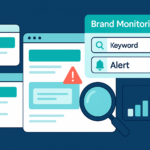
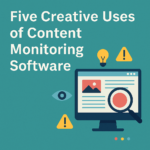
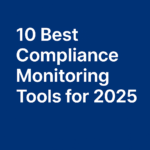
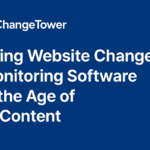
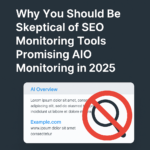
Adam Hausman